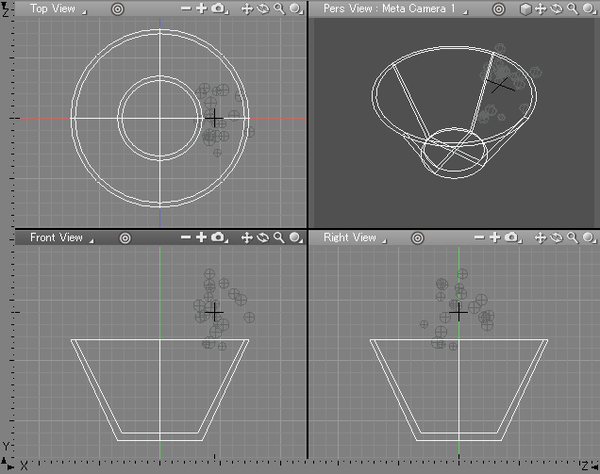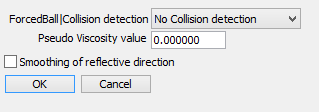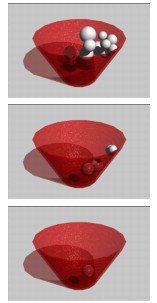Collision Setup
When Forced Balls are set to detect collisions with other objects, they will bounce when they collide with polygon meshes or curved surfaces located under the Forced Ball part, based on the bounce coefficient.
In such cases, you can specify several settings for each polygon mesh or curved surface, regarding the reaction of Forced Balls during the collision.
- Select a part that contains a polygon mesh or curved surface, then choose Forced Balls Attributes from the information pop-up menu in the Browser.
Note You should include the polygon mesh or curved surface in a part for this setting.

- The Forced Ball Reflective Wall Setup dialog box appears.
Here you can make the Forced Ball reflective wall settings for the selected polygon mesh or curved surface.The Forced Ball Reflective Wall Setup Dialog Box

- ForcedBall Pull-down Menu

You can specify the result for Forced Balls that collide with the polygon mesh or curved surface by choosing from among: Collision is detected / Collision detection isn't carried out / Stop / Disappearance.- Viscous Value Text Box
- This text box specifies the viscosity of the collision area. (The value should be from 0.0 to 1.0.)
- Smoothing of Reflective Direction Check Box
- When this check box is on, the reflective angle of the Forced Ball will be calculated as if it collided with a smooth surface.
- When you make the settings and click OK, the settings are applied as the reflective wall properties for the selected polygon mesh or curved surface.

The Browser when ForcedBall: Disappearance is set for a curved surfaceNote You can only use polygons with triangular or quadrilateral faces as a reflective wall.
- When you create an animation, you will see that the polygon mesh has the reflective wall properties you set.

ForcedBall: Disappearance is set for a curved surface